Bigcartel Custom Domain Name Website Keeps Becoming an Active and Inactive Again
These days, if you want to sell something, anything, you can be selling it online in a matter of hours, sometimes for free. There's more opportunity than ever to create a successful ecommerce business. But there's also a dizzying selection of ecommerce platforms.
That's why we did the work for you, and took a deep dive into the five leading ecommerce platforms, outlining what each one has to offer and which one might be right for you.
bOne that will become immediately apparent to anyone looking to get into ecommerce is that it is impossible to find a one-size-fits-all ecommerce platform.
You have some platforms that are better for entrepreneurs who are just starting out, and other platforms better suited to small-to-mid-sized businesses. Some platforms are easier for beginners, but might seem too simple for those who like having more options.
Each one has its own pros and cons, so there's truly no one best choice, but finding the right one for you is a whole different matter entirely.
As part of the release of our newest online course, Start and Scale, where we teach you everything you need to know about starting your own ecommerce business, we spent several hours picking apart the ecommerce platforms on the market to see how they compare.
In the end, we came up with our top five favorite tools for today's ecommerce entrepreneur, and put together the following in-depth reviews of each one. Again, because your needs and skills may vary, this isn't a ranking—more like a handbook for selecting the right ecommerce platform just for you.
Listed in no particular order, here's the Foundr review of the five best ecommerce platforms.
Best Ecommerce Platforms
Note: Full disclosure, there are affiliate links within this post. However, the opinions and reviews I give are based on my own personal experiences and research.
Shopify
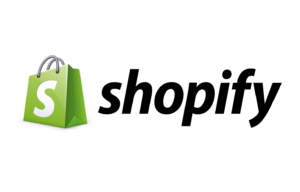
If you've been searching for an ecommerce platform to run your store, you've no doubt seen the name Shopify before. Out of all the current players on the market, Shopify is by far the most popular, with over 400,000 merchants using it in 175 countries.
It's the preferred ecommerce platform of Gretta Rose van Riel, head instructor of the Start and Scale course. Gretta is the founder of SkinnyMe Tea, The 5th, and Drop Bottle, along with brands like Tesla and Black Milk Clothing.
With all that in mind, let's see what makes Shopify the preferred choice for so many different ecommerce businesses.
Shopify: Short and Sweet
Pros
- Intuitive and straightforward to get your online store up and running in a short amount of time;
- Over 100 well-designed themes and templates to pick and choose from;
- All the essential features an entrepreneur needs to run an online store, already natively integrated within the Shopify platform;
- An impressive app store for added customization and features for your site;
- Incredible customer support;
- Multiple payment plan options, depending on your own needs;
- Shopify POS, for those who want a brick-and-mortar business as well, which allows you to update inventory, orders, and customers from any device.
Cons
- Shopify does charge you for every transaction, unless you sign up for Shopify Plus;
- Costs can very easily snowball, as extra features, apps, and themes all have their own individual payments from one-off, to monthly, to annual;
- Even if you already have a background with HTML or CSS, you will need to understand Shopify's own coding language "Liquid" if you want extra customization;
- All the native features offered by Shopify are incredibly bare bones. You can work with them, but you will need to go to the app store for extra functionality.
Shopify Pricing

There are four basic payment plan options when it comes to Shopify, with the lowest starting at $9 a month and their most expensive plan at $299 a month. For enterprise-level businesses, though, you can also sign up to Shopify Plus.
Shopify does also offer a 14-day trial for you to test out its various features before committing to anything.
With their basic plan, at $29 a month, you have access to the core Shopify features like being able to create discount codes, host a blog, and access their app store. However, purchasing their higher-tiered plans also gives you access to other features like the ability to generate gift cards and calculate shipping rates of third parties, and abandoned cart recovery.

While Shopify's pricing does make sense, and it is indeed competitive in comparison with other ecommerce platforms, I should also point out that it is incredibly easy to find your costs snowballing if you're not careful.
Shopify places a transaction fee on all orders on your store unless you're on Shopify Plus or your customers are using Shopify Payments. The basic plan charges you an additional 2% fee per transaction, and their advanced plan only charging you an extra 0.5% per transaction.
Also, not all of Shopify's apps are free. Depending on what kind of functionality and features you want for your online store, you will need to purchase these apps, which can add up.
For example, to integrate your Shopify store with the CRM tool Infusionsoft, you'll need to purchase the app for $55 a month, on top of whatever you're already paying on your Shopify plan.
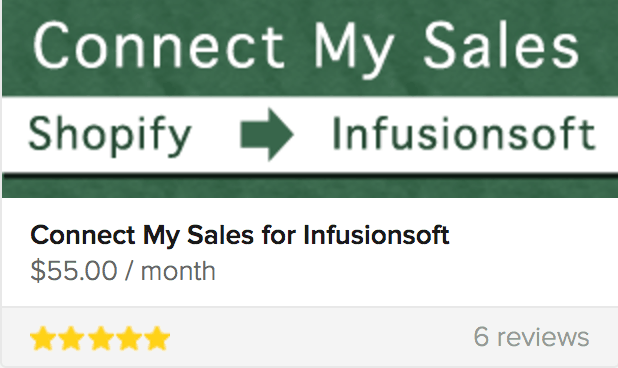
While this is by no means a deal breaker, since these features can end up saving you a lot of time and money in the long run, you have to be careful with your budgeting. You can find out more about Shopify's payment plans and pricing here.
Ease of Use of Shopify
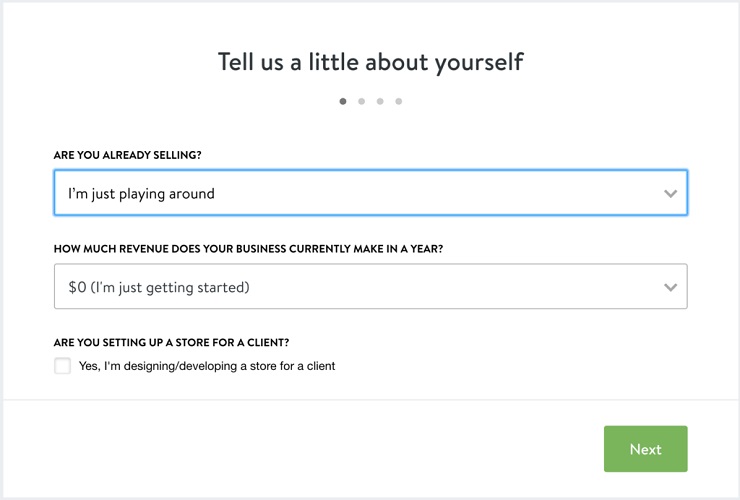
Where Shopify really shines is how easy it is to use. This is by far the most intuitive ecommerce platform I've experienced, and I managed to set up a functioning store in around 50 minutes.
The layout of Shopify's backend is fairly straightforward, allowing you to quickly add new products quickly. Everything you might need to customize about your product, including tracking inventory, adding variants, and even SEO, is all on one page.
While all of Shopify's features do seem intimidating at first, I was pleasantly surprised by how they onboard new users with a simple checklist for you to follow, even suggesting different apps you can use to expand your store's functionality.
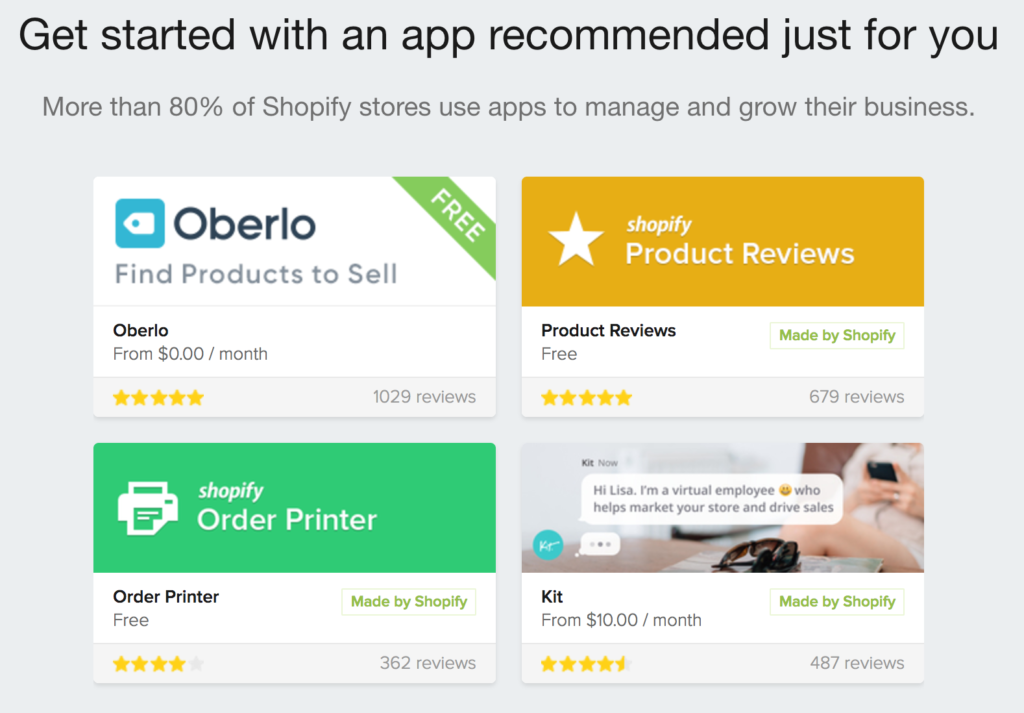
Even when you dive in deeper with your Shopify store, it's fairly easy to manage and track your orders and customers. I didn't find myself experiencing any major problems when I began "scaling up" my store and started adding in extra features. Even when I did encounter a problem, Shopify's support team were very quick to help me out.
I can't see anyone having problems setting up a Shopify, especially for beginners who have never used this type of tool before.
Shopify Design
Shopify offers over a hundred different themes and templates you can choose from for the design of your store. Each theme is professional designed and visually appealing, and they all look very sleek and modern. While there are free themes for you to choose from, you can visit their theme store and purchase one with extra features for $160, on average.
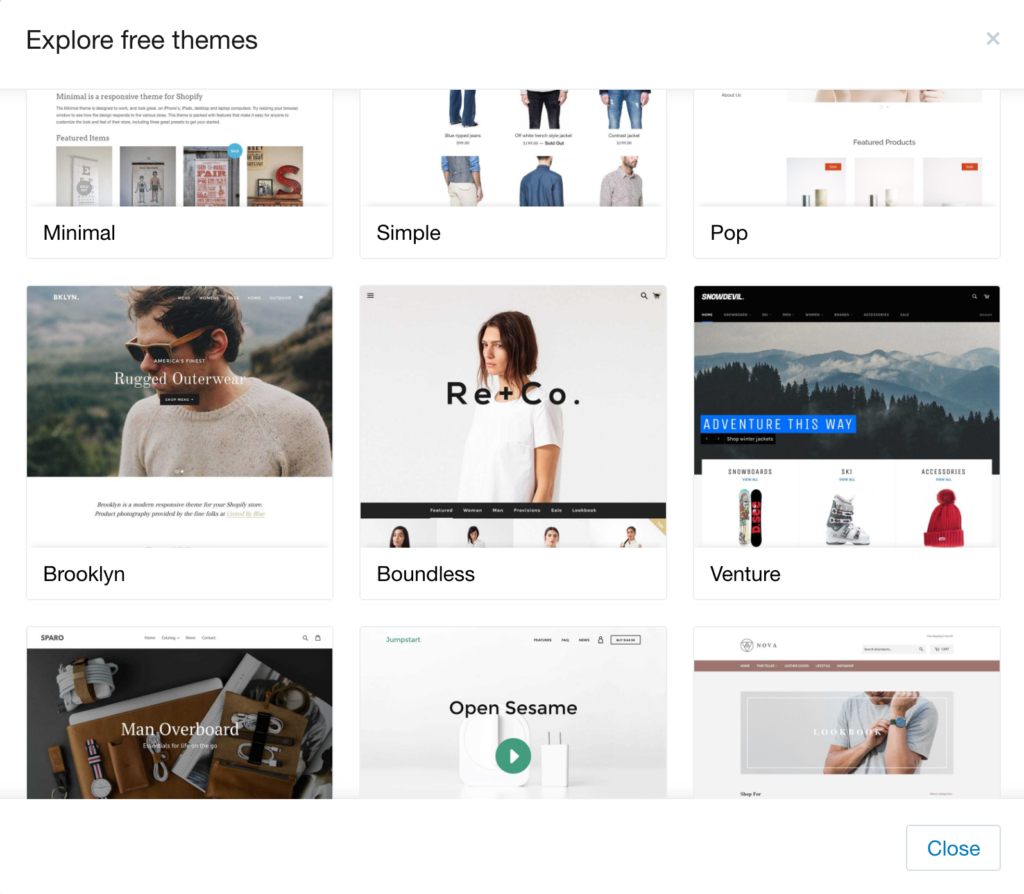
When it comes to customizing the look of your store, Shopify has a straightforward drag-and-drop feature, and it's easy to make basic design changes like picking new color schemes and fonts. Something I was pleasantly surprised by was that Shopify also offers one complimentary hour of free design support to whoever wants it. And, for those looking to make extensive changes to their theme, you can hire a "Shopify Expert" to handle it for you.
One caveat, though, is that while you can upload your own themes and templates to Shopify, for one reason or another, they end up being very difficult to edit.
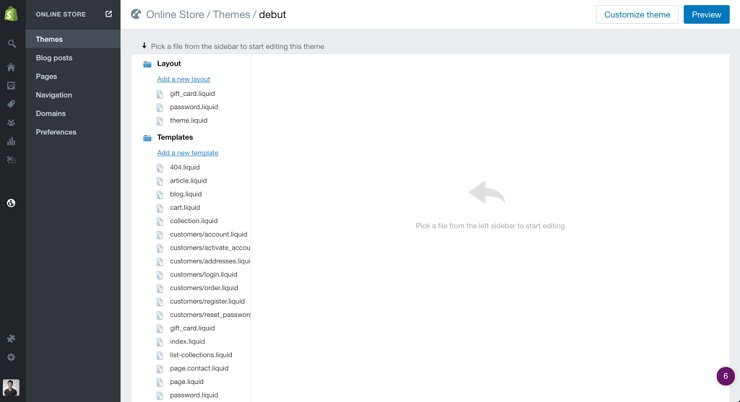
I also encountered problems when I tried to customize the code myself and ended up scrapping it and starting again because of Shopify's unique coding language.
Shopify Features
On the bright side, Shopify's native features offer essentially everything you need to get your store up and running as soon as possible.
The SEO features are all built-in and automated, so you can customize your own target keywords, URLs, and other details quite easily on your product pages. If you already have a paid ad campaign going, with Google Adwords or Facebook advertising, for example, all you need is the code to immediately integrate it into your Shopify store.
Even using their basic plan, you can create discount codes for any item in your store. Upgrading to their other plans also gives you built-in features for marketing like gift cards, and abandoned cart recovery, which is always useful for any ecommerce entrepreneur.
But, and this is a big but, all the native features are stripped down to their most basic form. This means if you want more functionality, you have no choice but to head over to their apps marketplace.
For example, while you can set up a blog with Shopify, it only has the most basic of features. You can do text, add in images, and all the other basics. But for someone used to the robust nature of WordPress, it was definitely a step back from what I was used to.
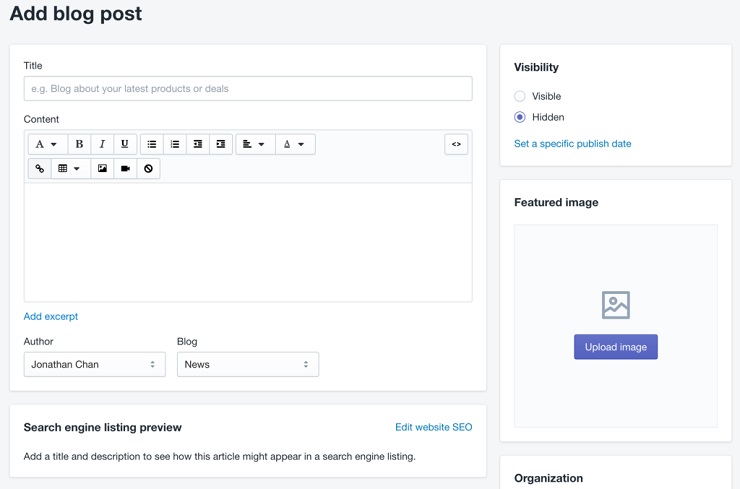
Shopify Support
Shopify's customer support is one of the top reasons I would recommend it for anyone who doesn't have experience building an online store. When Shopify say that they have 24/7 customer support, they really mean it.
While you do have the option to call them directly, with different toll-free numbers for different countries, I've found their live chat function to be more than enough.

The staff were friendly and helpful, and it was one of the shortest waiting times I've ever experienced for a live chat. Everyone I spoke to was knowledgeable, and if they couldn't help me at that moment, they could at the very least point me in the right direction.
When you're running your own online store, you don't have the time to be going back and forth with developers, and unless you're experienced, it can intimidating trying to figure everything out yourself. Thankfully, Shopify's support team understand their customers and are quick to help.
You can also check out Shopify's own online community if you have any particularly niche problems. In my brief time there, I found the forums to be fairly well-moderated, but most of the responses I saw were people trying to sell something instead of genuinely helping.

Final Thoughts on Shopify
Shopify is about as close to an all-in-one a solution as you can get with an eCommerce platform. I'd highly recommend it for anyone who is building their first online store, or anyone looking to quickly scale an existing online business. It offers everything the average entrepreneur would need for ecommerce.
Want to Learn How to Start & Grow a Profitable Online Store in 12 weeks? Sign Up for Our FREE Masterclass!
Learn How to Start a Profitable Store in 12 Weeks or Less. Join our FREE Ecommerce Masterclass!
WooCommerce

Next up we have WooCommerce, one of the best, if not the best, ecommerce platform if you're ready to get down and dirty.
While technically not an ecommerce platform, WooCommerce is a WordPress plugin that is free to download and install onto any WordPress site. What WooCommerce basically does is take your existing WordPress site and turns it into an online store.
With over 1.7 million stores operating on WooCommerce, and with over 19 million downloads since its founding in 2011, people are clearly liking what WooCommerce has to offer. Let's find out why.
WooCommerce: Short and Sweet
Pros
- If you have an existing WordPress site, you don't need to migrate it to a completely different ecommerce platform;
- All WooCommerce stores are automatically mobile friendly;
- Has the largest app store out of all the ecommerce platforms reviewed, with 38,500 plus apps and extensions;
- Completely free to download and install;
- Comes with a robust and lively community of developers due to its open source nature;
- Allows you to customize your online store in whatever way you'd like.
Cons
- While the plugin itself is free, the extensions and apps are not and those costs can add up;
- Average, at best, customer service in dealing with specific issues;
- You will need experience with coding to use it to its full potential;
- No control over WordPress updates, or other plugins that might not work well with WooCommerce;
- For non-coders, it is a steep learning curve to fully understand WooCommerce.
WooCommerce Pricing
Unlike the other ecommerce platforms mentioned in this article, the overall pricing of WooCommerce isn't particularly straightforward.
On one hand, WooCommerce is an open source software plugin, meaning that it is completely free to download and install. However, you have to keep in mind that in order to use WooCommerce, you first need a WordPress site, so you'll have to consider the cost of hosting your site, themes, and extensions.
Personally, I'd recommend checking out Pressable if you're building your site from scratch. It automatically comes with WooCommerce installed, along with a handful of other plugins for ecommerce sites, with their cheapest option being $25 a monthfor up to five sites.
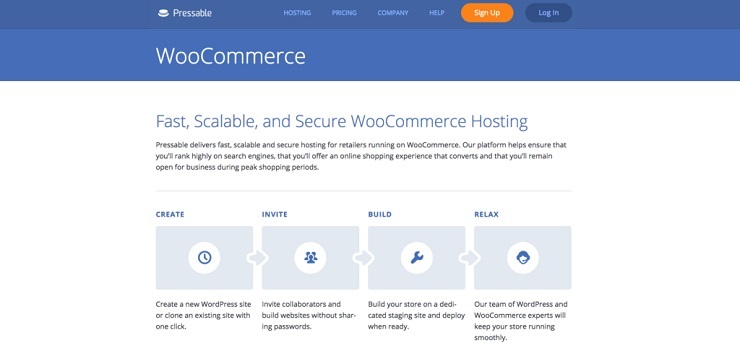
That said, you are more than welcome to use whatever hosting service you prefer, like Siteground, or HostGator, for example.
Something else to keep in mind is that WooCommerce does not immediately come with a ton of functionality. While the basic functions you need to run an online store, like the ability to track inventory, and payment options like PayPal or Stripe, are free to install, other features cost anywhere from $50 to $299, either as a one-off, or an annual basis.
You can check out the different extensions that WooCommerce has to offer here.
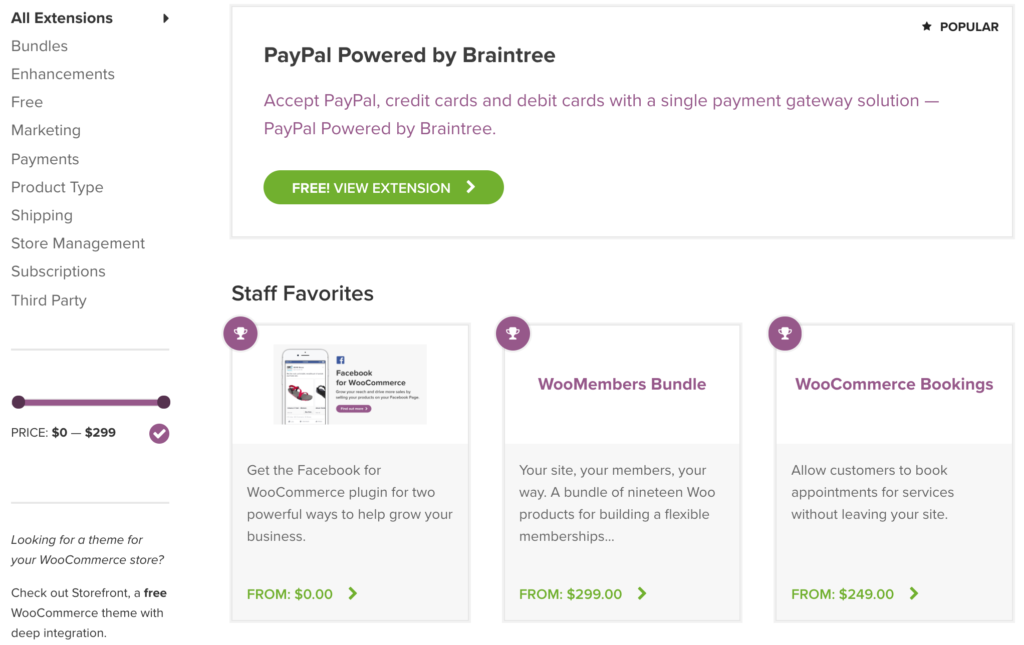
Overall, though, the initial cost of setting up my WooCommerce store didn't end up as high as I expected. I was able to get all the functionality I wanted and get my test store up and running for under $150.
Ease of Use of WooCommerce
To be honest, I have very limited knowledge when it comes to coding. In fact, I actually had to get our Tech Ops Manager Jesse Song to help me set up the WordPress site.
If, like me, you have enough difficulty in setting up a WordPress site, then right off that bat I'd suggest staying away from WooCommerce. However, if you already have your own WordPress site, or have more than a beginner's level of understanding when it comes to building a website, I'm sure the whole process will be a lot easier for you.
Installing the plugin itself was fairly straightforward and WooCommerce does have a basic onboarding sequence to help get you up to speed, walking you through your store locale, shipping and taxes, payment options, and other basic details.
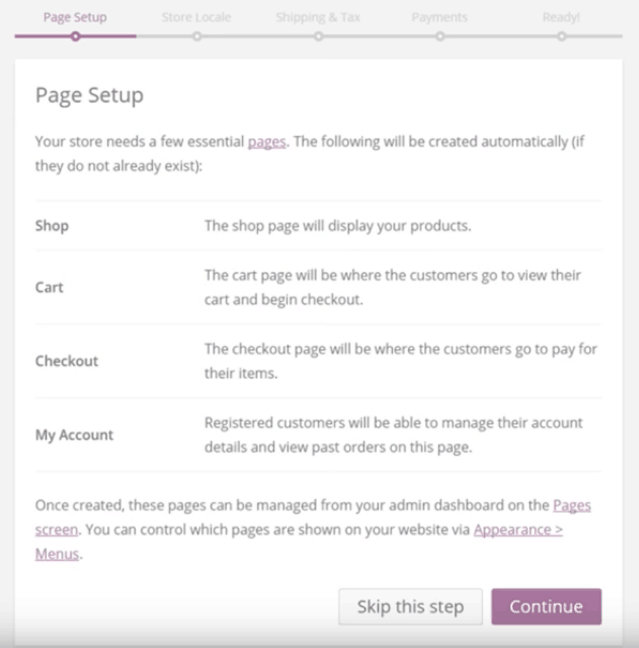
From there, especially if you've had experience with WordPress before, it's easy to add a new product to your store. Adding in production descriptions and images was very simple.
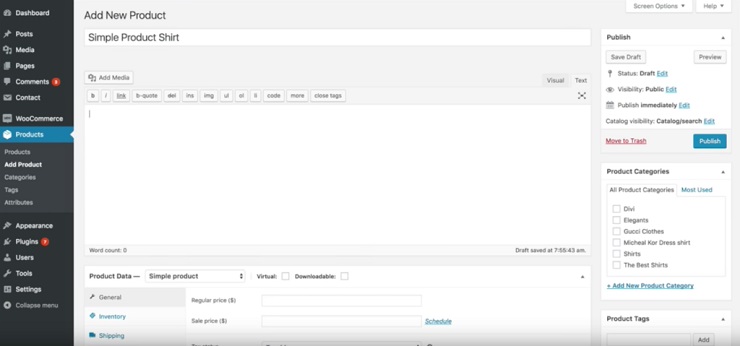
Something I really appreciate, and where WooCommerce's strength lies, is the ability to customize your store. With WooCommerce, I don't have to limit myself to a straightforward online store, and I have the option to customize each individual product page right off the bat, depending on what type of business I want to run.
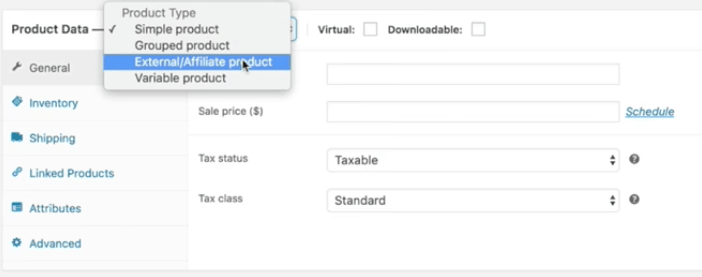
However, I did begin to experience some trouble when I started to scale my store and add other extensions. The overall experience was definitely clunky and, yet again, I had to call upon Jesse to help me navigate through certain options and figure out why certain things weren't working the way I wanted them to.
While I did eventually manage to get things working, it took me a couple of hours to figure it out, not to mention constantly begging Jesse for help. While the overall result was exactly what I wanted, it was definitely beyond my personal skill level.
There's one more thing I should mention, even though I didn't experience this problem myself, as I was only testing it out for a couple of days. Because WooCommerce and all its extensions are hosted by WordPress, every time WordPress updates it causes a domino effect, where WooCommerce and its extensions, and all your plugins have to update as well in order to comply.
While WooCommerce's core functionality is being able to accept and process payments, there can be issues if a plugin or extension developed by a third party doesn't update in time, or changes its code, conflicting with other extensions. This means that if something breaks on your site, it'll take some time investigating to figure out what the source of the problem is.
WooCommerce Design
As with everything else when it comes to WooCommerce, you theoretically have unlimited options when it comes to designing the right look for your store. The only caveat is that you need to be ready to put the work in.
The first place to start, especially if you're a beginner, is WooCommerce's default theme, called Storefront, and built specifically for WooCommerce. I found that it was actually lot easier to alter the design of my store when using Storefront, and I didn't need to dive into WordPress's customization feature to get the results I wanted.
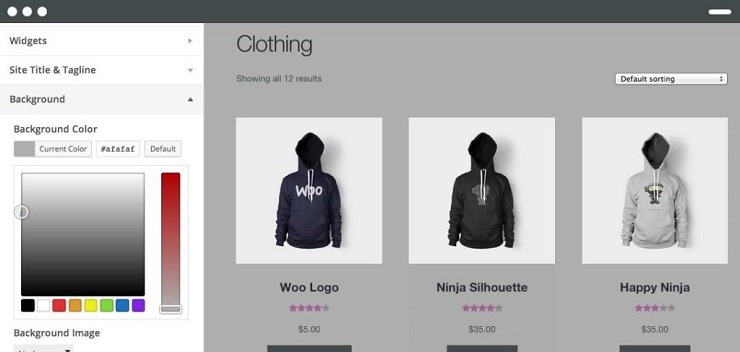
Beyond that, you can also check out some other themes available for purchase directly from WooCommerce. The designs themselves are quite clean and would get the job done, but I wouldn't go so far as to say that they're incredibly eye-catching or particularly well-polished. Also, the number of theme options that WooCommerce offers is quite limited, and even the most expensive ones still look quite plain.
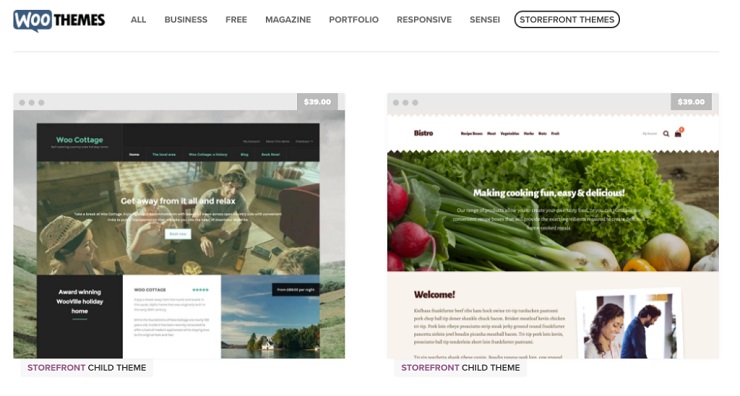
If the design and look of your online store is important to you, and it really should be, you don't have many options out the gate.
But again, theoretically, you have limitless options when it comes to picking the right theme and look for your store. You should be able to use any number of free or paid WordPress themes out there, and you're not short on options when it comes to finding one that best suits your business.
Just make sure that the theme you choose is WooCommerce compatible and is as up-to-date as possible, otherwise you'll end up with a broken site. I'd highly recommend checking out ThemeForest for thousands of WooCommerce compatible themes. Conversely, you can check this post that features dozens of top WooCommerce themes.

Even if you don't happen to find a theme that you like, or want some extra customization, you can jump into WordPress's backend and customize it yourself. If you know what you're doing and have a little time, the sky really is the limit when it comes to the design of your store.
WooCommerce Features
To put it simply, you will be hard-pressed to find an ecommerce platform as feature-rich as WooCommerce is.
While, like Shopify, WooCommerce comes with all the basic features you need to run an online store, where WooCommerce dominates the rest of the competition is that you literally have thousands of different extensions and plugins to choose from, depending on what you want you want out of your store. In fact, there are so many different options that it can actually feel quite overwhelming.
Depending on what kind of business you're running, you can customize your online store to fit whatever needs you need, and you're not limited to running a straightforward ecommerce store that dropships physical goods.
You can take a look at the different "Product Type" extensions available, with the three most popular being membership sites, subscription services, and bookings.
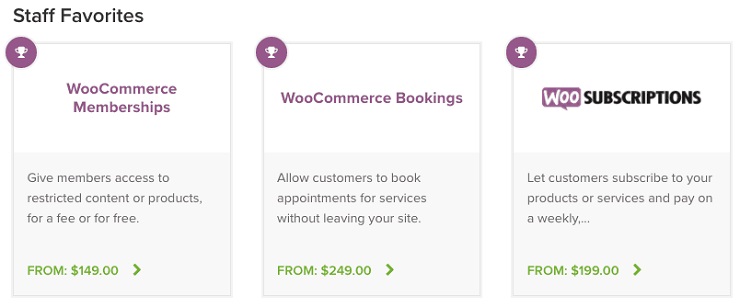
You can also find other extensions created by third-party developers and agencies that are vetted and given the official stamp of approval by WooCommerce. And even If you happen to be unable to find the extension you need, or want something custom-made, you have a couple of options.
You can get in touch with a "WooExpert" third-party developers and agencies who have been selected by WooCommerce to help you develop the features or extensions you want. It should be noted that, WooExperts do not work for WooCommerce, they are simply contractors that are recommended by WooCommerce, so you'll need to work with the WooExpert one on one.
The other option is to roll up your sleeves and develop the extension yourself. There is a large, and quite active, community based around WooCommerce and WordPress in general. And because WooCommerce itself is open source, it isn't difficult to create your own extensions and integrations if you know what you're doing.
And, once again, because you're working on a WordPress site, you have any number of WordPress plugins within reach, adding anything from SEO features to advanced marketing tactics.
WooCommerce Support
The customer support WooCommerce provides is pretty average, with the standard process of creating a support ticket and waiting for a representative to get back to you. The response time can be anywhere from 12 to 24 hours, which can be a problem if you're looking for a fast solution.
Another complication is that if a third-party plugin doesn't work, there's a chance that WooCommerce might not even be able to help you, as they didn't create it. That means you would have to reach out to the creator of that plugin for help, and there's no way to tell when (or if) they'll respond.

Otherwise, you can solve the problem yourself.
On the bright side, WooCommerce does offer very comprehensive documentation, which offers solutions and step-by-step tutorials on how to solve the most common issues. You can also turn to the forums for help, and again, WooCommerce has a very vibrant and active community, most of whom are professional developers who can help you out, or point you in the right direction.
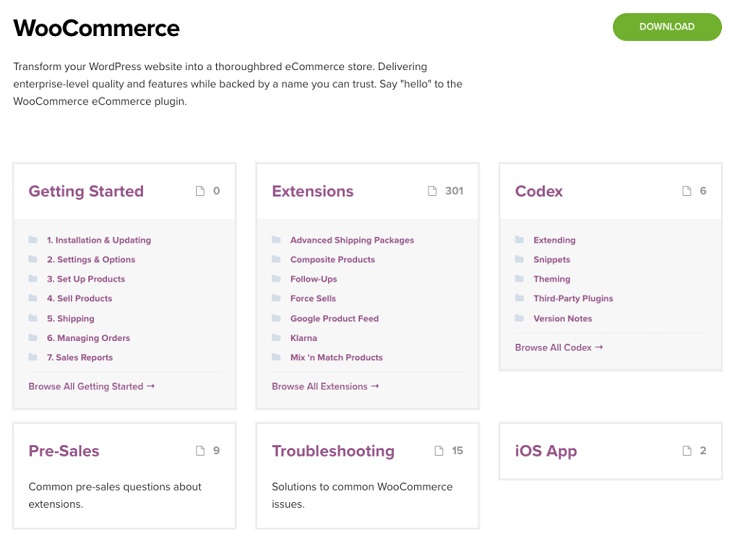
When I spoke with WooCommerce's CMO, he mentioned that WooCommerce is slowly implementing a live chat feature for customer support and that they are working on providing a more concierge service, something that they hope will be made available to all WooCommerce customers in the near future.
Final Thoughts on WooCommerce
There's no denying that WooCommerce is incredibly powerful, and possibly the most robust out of all the ecommerce platforms I've reviewed. However, the question is whether or not you have the time and resources to fully take advantage of all of WooCommerce's potential.
It's sort of like building your own PC. If you know what you're doing then the world is your oyster. But if you're looking for something that you can just plug-and-play, WooCommerce is probably not the solution for you.
If you're a whiz with WordPress or have a developer to work with, then WooCommerce is a very powerful option that could be perfect for your needs.
Want to Learn How to Start & Grow a Profitable Online Store in 12 weeks? Sign Up for Our FREE Masterclass!
Learn How to Start a Profitable Store in 12 Weeks or Less. Join our FREE Ecommerce Masterclass!
Squarespace

When Squarespace first appeared on the scene in 2003, it originally started off as a website builder with a focus on beautiful design and providing an easy and effortless experience for their customers.
Today they have millions of customers, ranging from your average blogger to big name brands like Lyft and GirlBoss.
In the past couple of years though, Squarespace has pivoted slightly and starting putting more emphasis on providing customers with the ability to sell online. This functionality originally started off as an additional feature for people who wanted to sell the odd item or merchandise, but Squarespace has since focused on becoming a fully baked ecommerce platform.
I took a peek underneath the hood to see what it's like.
Squarespace: Short and Sweet
Pros
- Gorgeous design and beautiful templates to choose from;
- Simple and intuitive interface for users, no matter their skill level;
- Easy to get your online store up and running in a short amount of time;
- All the necessary features are built in and developed by Squarespace, so you don't need to rely on other apps or extensions;
- Above-average customer support, with a high-quality customer forum;
- Strong focus on providing you and your customers with a rich visual experience;
- All Squarespace themes are automatically mobile-responsive.
Cons
- Somewhat restrictive functionality;
- No marketplace for third-party apps or extensions if you want specific features;
- Stripe and PayPal are the only two payment gateways available;
- Current navigation options aren't suitable for users with a large variety of products or options;
- Can't preview any changes you make to your store;
- Limited ability to customize CSS and HTML.
Squarespace Pricing
While there are four different payment plan options available on Squarespace, I'd recommend you skip the two cheapest options and go straight to the Online Store options. The main reason being that if you're looking for a fully functioning ecommerce platform, you won't be able to do so with any of their Websites options.
Squarespace offers a 14-day trial for all their plans, and you don't need to enter your credit card details either, so you don't need to be wary of any hidden payments.
Because Squarespace has all their features built in, and there is no app store for third-party extensions, what you see is what you get when it comes to pricing.
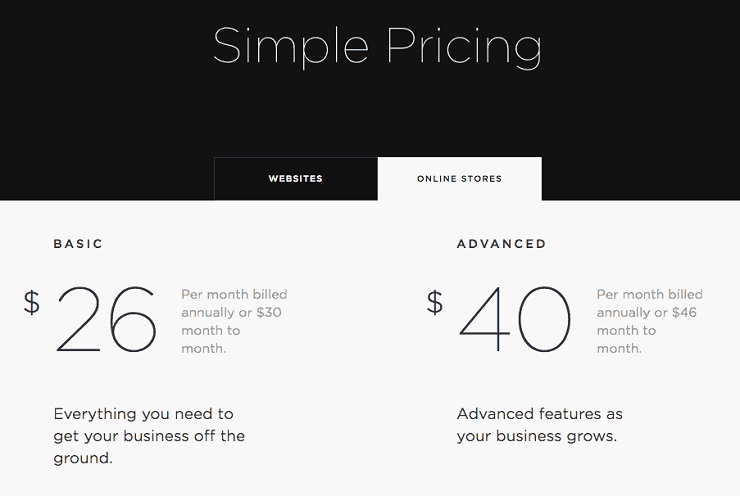
Their Basic plan is $26 a month, and you'll get access to basic ecommerce features like analytics, inventory tracking, and the ability to give discounts. While their Advanced plan is $40 a month, you get a much wider array of features, like abandoned checkout recovery, and a checkout page on your domain.
At first glance, Squarespace is more expensive than other ecommerce platforms on the market. That does make sense, considering how Squarespace markets itself as a premium tool.
Overall though, while the initial price tag might turn people off, in the long run Squarespace is actually marginally cheaper than other options like Shopify or Big Cartel.
Ease of Use of Squarespace
Squarespace is a breeze to use. Their commitment to professional and polished design extends to their backend as well, making the whole experience rather enjoyable.
Because Squarespace doesn't require any additional plugins or features, everything you need to get your ecommerce store up and running is on the main menu and easily labelled.
Adding products to your inventory is also easy, and there are even specialized options for each product, depending on whether it's a physical item, digital product, or a service.
Adding in additional elements like announcement bars, editing specific pages, and uploading pictures and videos to your site are similarly straightforward. However, that is pretty much where the intuitive nature of Squarespace's backend ends.
Frustratingly, I found that when it comes to altering the design of your site beyond what comes standard, things can start getting a little tricky.
For example, if you're in their "Home" menu, when you click on an element on your site it'll bring up options for you to add images, video, and modify the text. However, if you happen to be on their "Style Editor" menu, clicking on the same element brings up totally different options.
For the most part, though, you'll be able to figure things out after spending a couple of hours playing around. Once you get used to the somewhat odd way that Squarespace works, it shouldn't be an issue anymore.
My only two major problems with Squarespace's functionality is the fact that the overall design between each template is very different, and that you can't save your progress as you go.
If you happen to like a certain element or layout on one template, you have to manually recreate it on another template. You can't simply import, let's say a blog post page, from one template to another without creating it from scratch. That means if you end up spending hours on one design and in the end decide you don't like it, you have to start all over again, design-wise.
Another aspect I found frustrating is that Squarespace does not offer you the ability to save your design history. While there is an "undo" button for any design mistakes, you can't compare the changes you've made side by side, or automatically go back to your previous design.
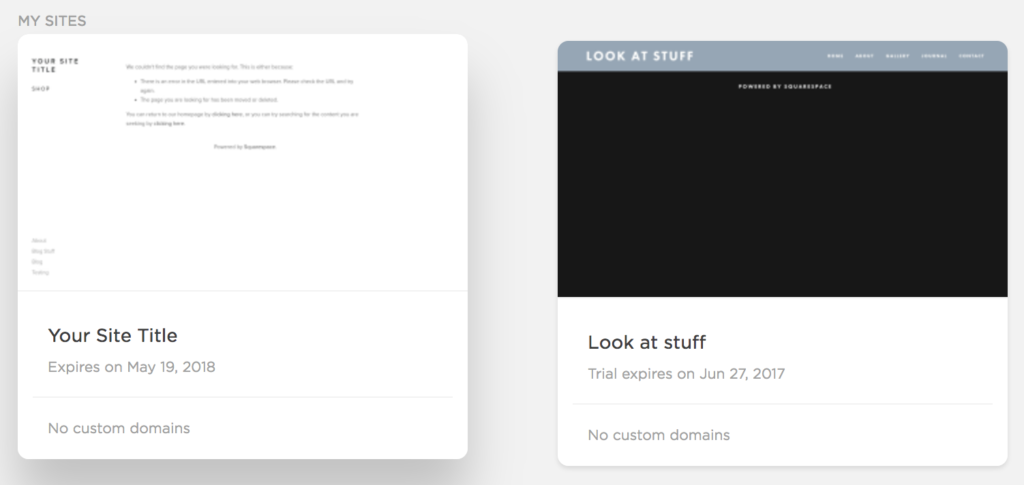
In the end, anytime I wanted to make any changes to my store, I took a screenshot of everything first so I could remember the setting it was at before. Then I'd have to compare the changes I made against the screenshot on a different screen.
Squarespace Design
This is the area in which Squarespace shines. After all one of their core values is that "design is not a luxury".
Squarespace undeniably has the most attractive looking designs and templates, and I counted over 60 free templates for you to use. Each of them support a shopping cart functionality, although only six templates were created specifically for online stores.
As Squarespace seeks to be an all-in-one solution for ecommerce, it is helpful that all of their templates are already mobile-optimized. It's also a nice touch that Squarespace has a feature where you can upload videos and use them as backgrounds to give your store more of a polished look and feel.
If you're planning on immediately catching the attention of anyone who visits your store, this is definitely something you're going to love.
Although, do note that this feature is only available for desktop versions of your website and is not supported on mobile. So you'll need to find a "mobile fallback" image for mobile browsers.
My major problem with the templates that Squarespace offers, though, is you're not given the same design options for every template. Some templates will give you a lot of flexibility in arranging and editing the components of your store, like changing the size of your heading, while other templates will not give you that option at all, meaning you're pretty much forced to use what's there.
While you can go into the CSS and change the code in order to get the results you want, do be warned that doing so gives Squarespace's support team the right to limit the kind of support they give you.
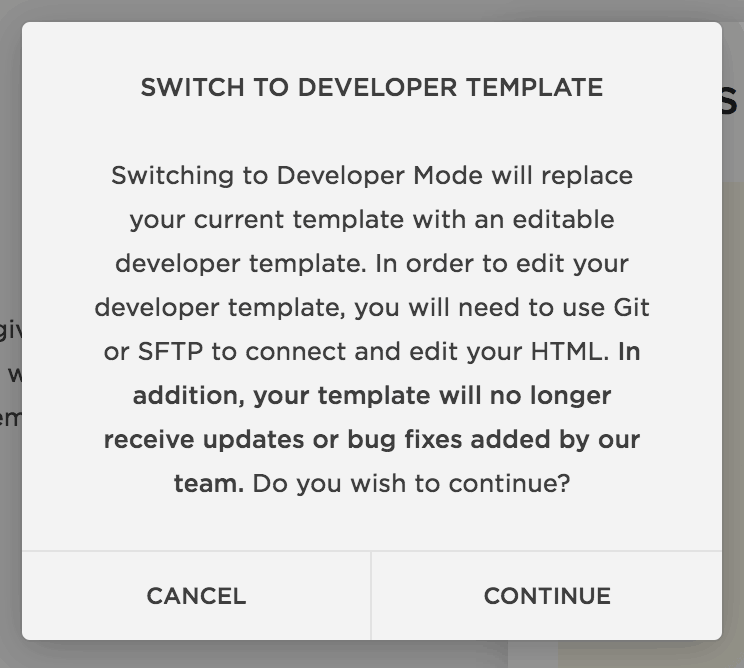
All in all, it is frustratingthat there are no universal controls for design. While Squarespace's designs and templates are undeniably pretty, you're largely limited to what Squarespace thinks is pretty.
Another small point that is worth mentioning is that the templates that Squarespace offers look great, but they're not exactly designed with ecommerce in mind. In comparison, the templates offered by Shopify look like they're built with every intention to drive a customer to your cart.
Almost all of Squarespace's designs go for the sleek, all-in-one look, so that everything is on the home page. This is great if you only have a handful of products, but if you have more than a dozen or so, it can get tricky and start looking cluttered. Even with the ability to add extra pages, the experience is not seamless for the customer.
Squarespace Features
Squarespace is determined to compete with the rest of the market by providing as much of a one-stop-shop experience as possible. Unlike other ecommerce platforms, Squarespace does not have a marketplace or a store where you can purchase extra features and add-ons for your store.
Squarespace has developed all their integrations natively, so theoretically, you should have everything you need to run an ecommerce business.

That also means that from start to finish, Squarespace is determined that you only do business through them. For example, you'll be able to purchase a custom domain name through Squarespace and be provided with your own Google Suite, so you can get your own custom domain and email accounts.
Everything you need to effectively run an ecommerce business comes with Squarespace, from creating promotional pop-ups, to blogging, to tracking cart abandonment. You don't have to pay any extra to get access to these features.
The two payment gateways offered are Stripe and PayPal, accounting is managed through Xero, you can track inventory with ShipStation, and build yourself an email list with SurveyMonkey. All of these are great services and natively integrated with Squarespace.
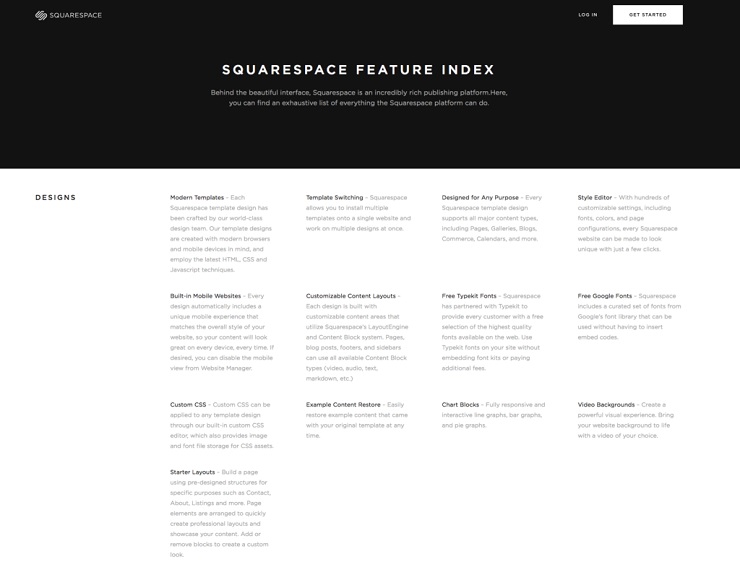
The problem arises, however, when you want to use something different.
If you'd like to use other software or tools that aren't offered by Squarespace, unfortunately, you're pretty much out of luck. You can't even use Zapier in order to connect Squarespace and third-party apps together.
While Squarespace offers everything a small business would needs with its own tools, you might come up short if you're a larger enterprise.
Squarespace Support

The customer support you receive from Squarespace is really good, with fast response times and a knowledgeable staff. The only way you can contact the support team is either through email or live-chat, and Squarespace has a policy of responding to each ticket within an hour. It's no surprise they've won multiple customer support awards.

Squarespace also has a huge library of online video tutorials to help guide you through their most common complaints and problems, along with in-depth articles on everything to do with Squarespace.
They also have a community forum for customers to post their questions. Although, a quick look showed me that it's mostly inactive, with maybe one out of every five or so questions getting answered.
You can check out all of Squarespace's tutorials and videos here.
Final Thoughts on Squarespace
At the end of the day, I can't help but like Squarespace.
The designs are great on both the front end and the back end, and while the user interface can be a little frustrating at times, you eventually come out with an undeniably polished result.
In saying that though, as an ecommerce platform, I would only recommend it for a very specific type of person. Squarespace is perfect for first-time entrepreneurs and small businesses who don't have a ton of variety in their product line. If you're someone who doesn't want to spend that much time learning all the other tools out there, then Squarespace would be the right fit.
I would liken the experience Squarespace offers to be similar to Apple. The product itself has a great user interface, everything is well-designed and easy to understand out-of-the-box. But if you want a lot of customization or something extra, then you should look elsewhere.
Want to Learn How to Start & Grow a Profitable Online Store in 12 weeks? Sign Up for Our FREE Masterclass!
Learn How to Start a Profitable Store in 12 Weeks or Less. Join our FREE Ecommerce Masterclass!
Big Cartel
When Big Cartel was founded in 2005, its founder was in a band and looking for a way to offer merchandise online, but couldn't find anything that met his needs. Like any other entrepreneur, he decided to solve his own problem, and Big Cartel was born.
Since then, Big Cartel has remained focused on its vision to provide artists with an easy, all-in-one solution for their ecommerce needs, developing a reputation within the artistic community as the go-to platform for niches like ceramics,giftware, and visual artists.
Here's why this small, but sleek, tool is considered to be one of the top ecommerce platforms out there.
Big Cartel: Short and Sweet
Pros
- Free for those who have fewer than five products;
- Incredibly affordable even if you're planning on having a larger store;
- Very easy to use and requires very little technical knowledge from its users;
- Possesses some neat marketing tools natively, like time-sensitive discounts and pre-orders;
- Integrates with Facebook stores to help maximize selling potential;
- Does not take a percentage from any of your sales, although standard payment processor fees still apply;
- IPhone app allows users to sell merchandise in person.
Cons
- Incredibly stripped down as an ecommerce platform, making customization difficult;
- Missing some core features that come natively with other ecommerce platforms;
- No app store or marketplace for added features and functionality;
- Limited themes and designs to choose from;
- Does not scale well.
Big Cartel Pricing
Right off the bat, Big Cartel is by far the cheapest option out of all the ecommerce platforms reviewed in this article. They offer four different payment plan options, all of them incredibly affordable and good value for money.
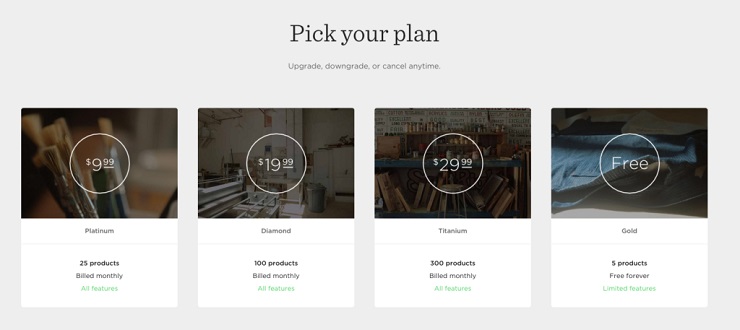
The cheapest option, the Gold plan, is completely free, although it does offer limited functionality. For example, you're limited to having five products in your store, one image per product, and you have to use a Big Cartel domain name, among other things.
For anyone looking to validate a store idea, or if they're just graduating from selling on Etsy, I'd recommend using Big Cartel to start off with.
Their three paid plans are still incredibly affordable, with the only difference between them, besides the price, being the number of products you can list on your store. But all paid plans have exactly the same features like your own custom domain name, a discount codes feature, and inventory tracking.
While Big Cartel is the cheapest option by a long shot, bear in mind that you are getting what you pay for, in the sense that Big Cartel does not offer many of the features that are considered essential to other ecommerce platforms.
Ease of use of Big Cartel
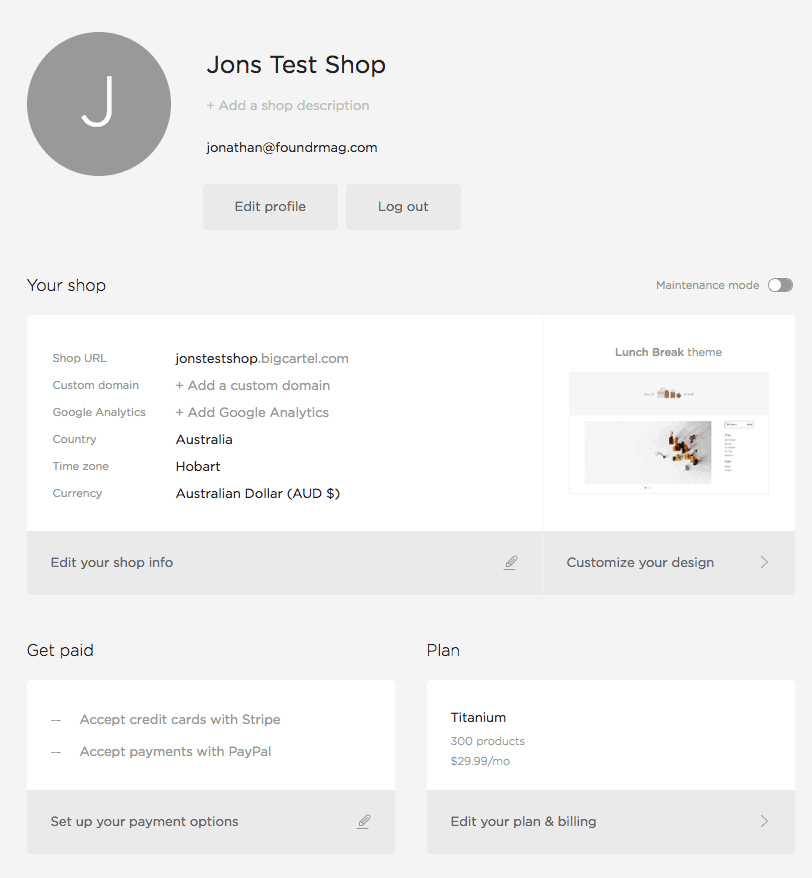
In the past year or so, Big Cartel has revamped its user dashboard to make the experience sleeker overall. Although you do have the option to switch back to their old admin dashboard, which is less visually appealing but a touch more intuitive to navigate.
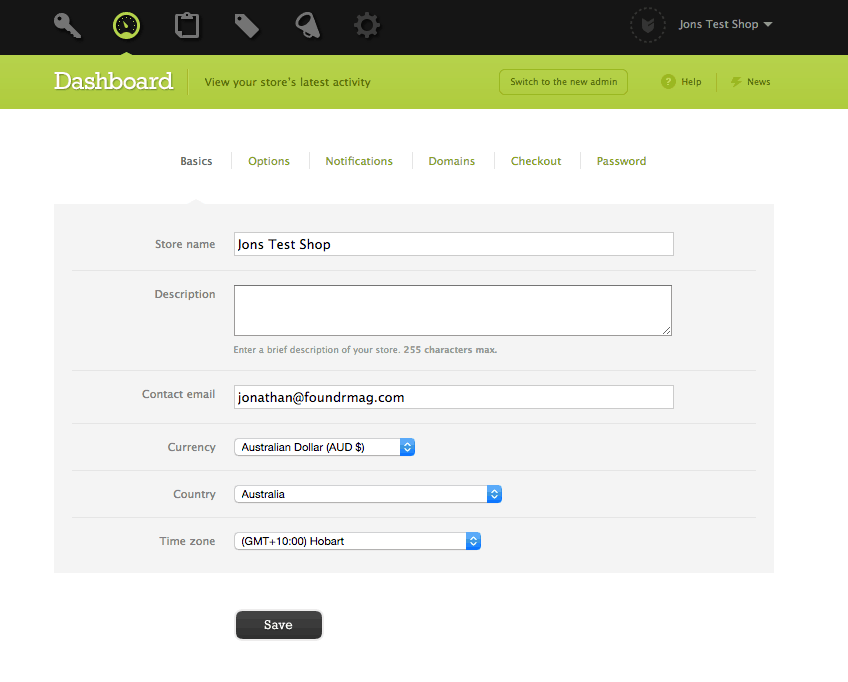
Something that I immediately noticed with Big Cartel is that it is stripped down to the max. It's not an exaggeration to say that they removed every unnecessary feature needed to make a sale, and then some. As a result it is incredibly easy to use, especially in comparison with other ecommerce platforms.
You can definitely see how dedicated Big Cartel is to providing users with a tool to get their stores up and running as quickly as possible. Every page on the Big Cartel dashboard is as uncluttered as they come, only including the most basic of features and options you need to get started.
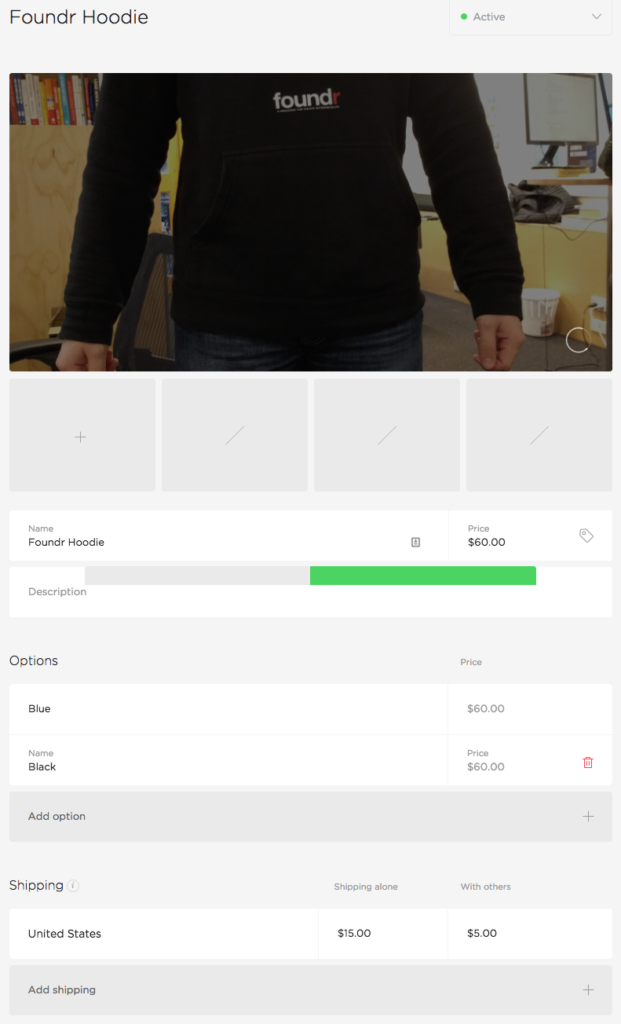
Out of the box, Big Cartel has everything you need to get a shop set up; in fact it only took me around half an hour to fully set up my shop.
A big sticking point with Big Cartel though is the overall lack of flexibility in design and function. Even adding extra pages to your online store is needlessly difficult.
I found that I couldn't create sub-pages for my blog test, meaning that I had to either adjust the code in each individual blog post I made, or have one giant blog page. In the end, I actually found it easier to have my blog page link back to another WordPress site and clone the basic design code of my Big Cartel site.
Something else that I found annoying when it came to editing the design and features of my online store is that there is no "preview" option for your changes. Your two choices are to either make the changes live, or put your store in "Maintenance Mode" which essentially takes your whole store offline while you make your changes.
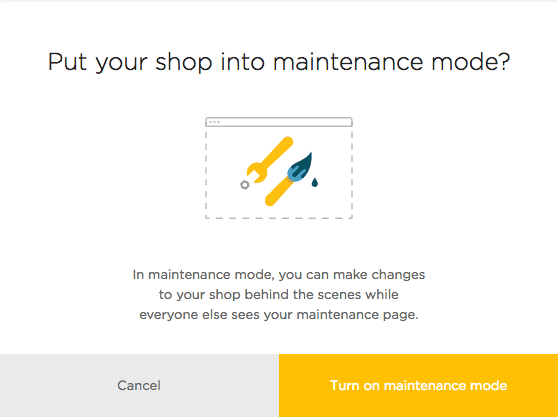
At the end of the day, Big Cartel's greatest strength is also it's greatest weakness. The simplicity that Big Cartel offers is great if all you're looking for is just that, but if you want more it starts to get tricky.
Big Cartel Design
Like the rest of Big Cartel, the designs and templates offered are simple and to the point, with everything stripped down to nothing but the most basic features. There are a total of 13 templates to choose from, although it should be noted that a few of them aren't mobile optimized.
The designs themselves are minimalistic, and although not the chic polished look of Squarespace, each template has a smart-looking layout.
All the templates have the same basic layout: a "Homepage" where all your products are listed, a "Products" page if you have more than just five items, a "Shopping Cart" page, a "Contact," and an individual "Product" page. Everything is typically listed in either a hamburger menu, or as options at the top or bottom of the store.
Design-wise, everything is refreshingly simple and no-nonsense, with what you need and nothing more.
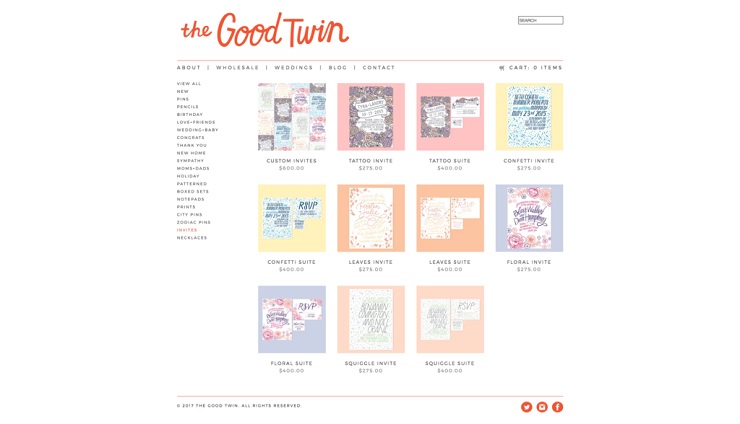
Courtesy of The Good Twin
But for those who do want more, you're going to have to go into Big Cartel's "Advanced" feature and change the CSS code yourself. Due to my lack of technical expertise, I found that even adding pop-ups to my test store was a pain and took me a while to figure out.
You're pretty much stuck with what Big Cartel offers you, and if you want to add extra features or edit any visual elements on your pages, you'll have to dive into their CSS to adjust the code. It should also be noted that, like Squarespace, Big Cartel reserves the right to limit the support they can give you when you start monkeying around under the hood.
Overall though, when it comes to editing the basic components of your store, like your logo, homepage slideshow, and font, everything is easy and straight-to-the point.
Big Cartel Features
Big Cartel is designed to be an easy, all-in-one solution, so they offer a number of free and paid native integrations for users, which pretty much cover everything you need to run a simple ecommerce business.
Once again, everything is stripped down to be as simple as possible with not a whole lot of variety or options with these native integrations.
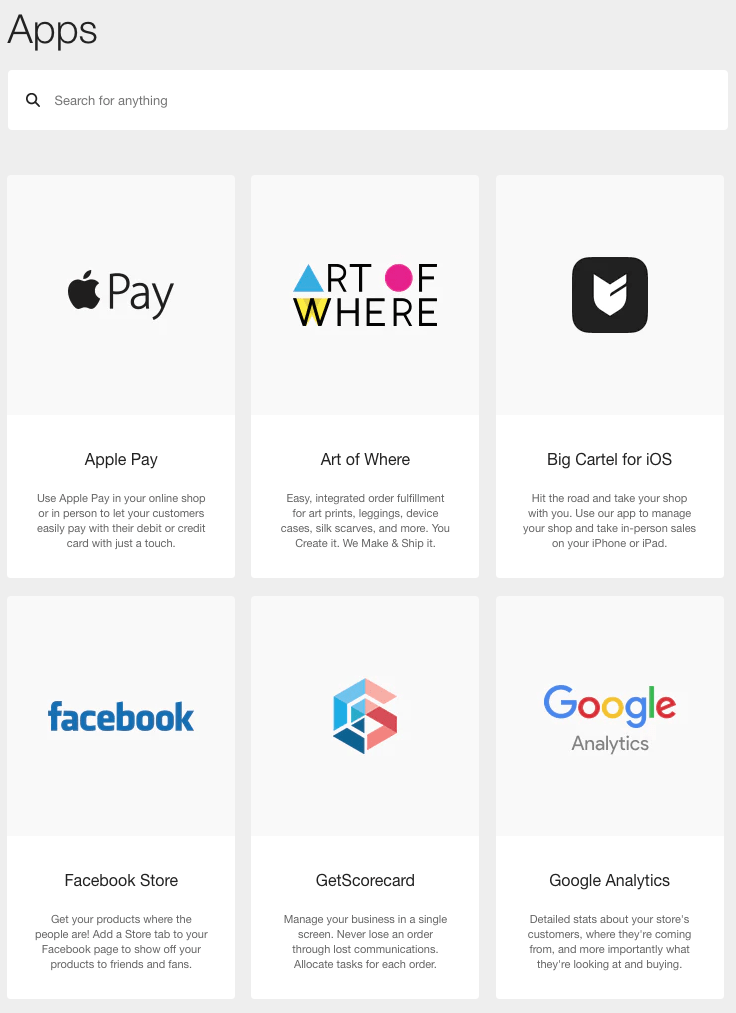
It's very clear, even with a cursory glance at their features index, that Big Cartel's target users are artisans and makers, offering integrations with businesses like Printful, Pulleyand Art of Where.
You can definitely see the benefit of using Big Cartel if you want to sell in person as well, through integrations like Big Cartel for iOS and Square, which allow you to use an iPhone or iPad to make sales. It's a thoughtful feature with a clear indication that Big Cartel understands its user base to be made up of artists, who can be found selling their merchandise at places like fairs, concerts, and other events, and will need a way to make transactions on the go.

Other useful native features include MailChimp for your email marketing needs, ShipStation for inventory tracking, and a nifty integration for your Facebook Store.
Fortunately, if you do happen to prefer other tools, Big Cartel has a native integration with Zapier], which allows you to connect your store with hundreds of third-party apps.
You can check out all of Big Cartel's native integrations here.
Big Cartel Support
It's important to keep in mind that Big Cartel, while popular, does have a fairly small team in comparison to other ecommerce platforms. That being said, their support can be described as average, and you can only connect with their support team through either email or live-chat.
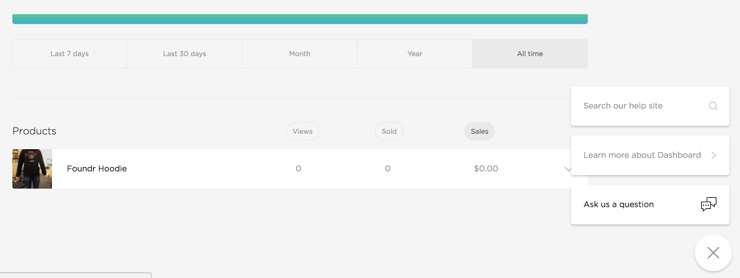
You can typically expect a response time of within 24 hours over email, and the live-chat I found to be a bit of a roll of the dice, depending on what time you're asking a question. I suspect it didn't help that I live on the opposite side of the world from the US-based Big Cartel team.
Otherwise, their help page is fairly standard, answering the most frequently asked questions, like customizing the code of their themes, and offering tutorial videos on how to get started.
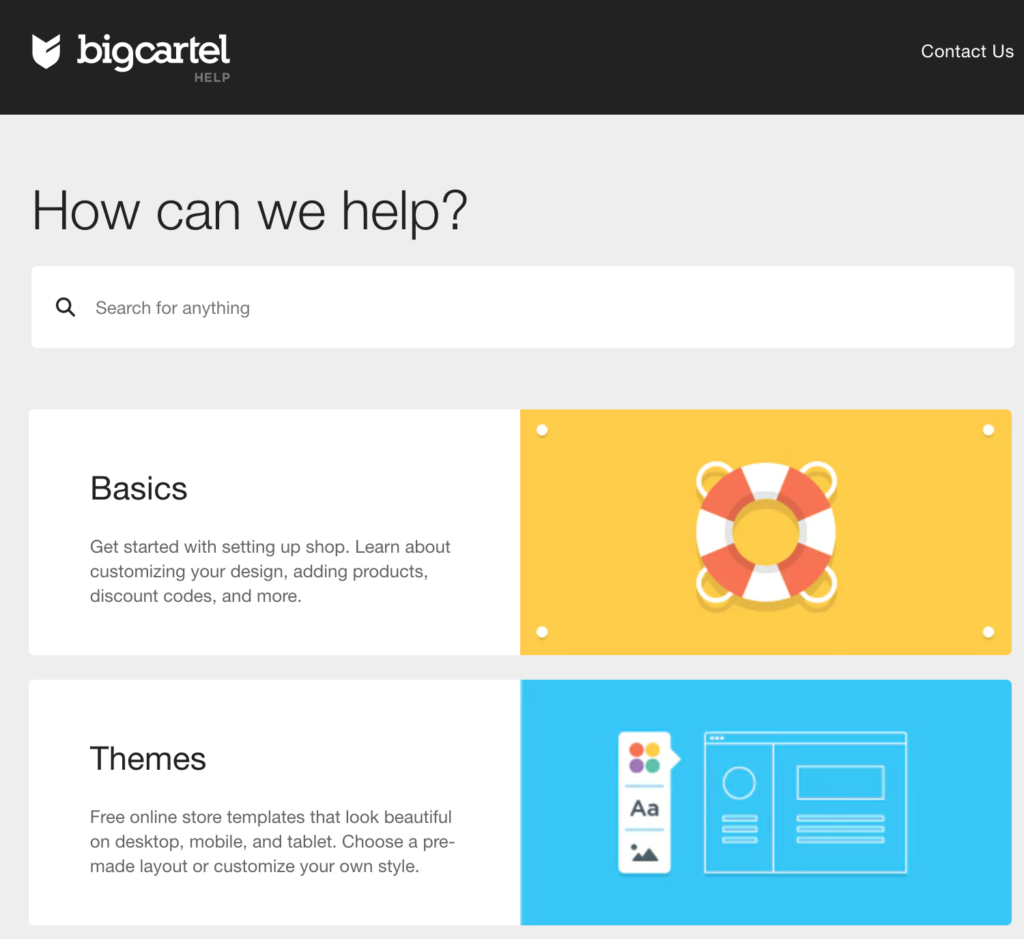
While admittedly basic, especially considering how streamlined Big Cartel is, I doubt anyone would experience many problems.
Final Thoughts on Big Cartel
Big Cartel has undeniably found a comfortable niche in the ecommerce platforms market, with a focus on artisans and makers. It's commendable how much Big Cartel goes out of their way to make their user experience as easy as possible.
For entrepreneurs who are looking at establishing small boutique businesses, I would highly recommend Big Cartel. For people who want more flexibility, though, I would advise you to stay away, as chances are you won't be getting the full experience or functionality you want.
Compared to all the other ecommerce platforms out there, Big Cartel is kind of like riding a bike. It's got everything you need to get you where you need to go and it's almost impossible to get confused with how it works. But it's up to you to decide whether or not that meets your needs.
Want to Learn How to Start & Grow a Profitable Online Store in 12 weeks? Sign Up for Our FREE Masterclass!
Learn How to Start a Profitable Store in 12 Weeks or Less. Join our FREE Ecommerce Masterclass!
3dcart
3dcart has been operating for close to 20 years now, and it's still considered one of the best enterprise ecommerce platforms in the world, and has even picked up its fair share of awards along the way.
They power more than 230,000 different stores around the world and offer one of the most feature-rich online store builders out there. From small businesses to large enterprises, 3dcart is built with every type of ecommerce business in mind.
Here's everything you need to know about whether to get started with 3dcart.
3dcart: Short and Sweet
Pros
- One of the most feature-rich ecommerce platforms out there;
- Incredibly flexible in terms of functionality and how much you can customize your store;
- A wide variety of marketing features native to the platform;
- Very easy to change and customize the design of your online store.
Cons
- Can be quite overwhelming to use, especially for first-time entrepreneurs;
- The free themes look quite basic, especially in comparison with other ecommerce platforms;
- Doesn't have the strongest reputation in terms of customer service.
3dcart Pricing
While 3dcart is not expensive, it's isn't exactly cheap either.
The payment plans are straightforward and quite reasonable, with a total of five different payment plans ranging from $19 a month to their enterprise option, which is reserved for businesses making over $400,000 worth of product a year.
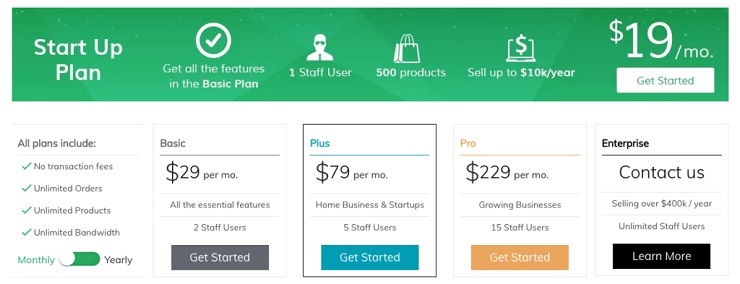
All the plans include the same basic features, such as unlimited products, unlimited orders, a built-in blog, and built-in SEO tools. Even at their cheapest plan, the Start Up plan, they possess all the basic features any entrepreneur would need to run a successful ecommerce business.
Purchasing higher-tiered plans gives you access to more features like email marketing newsletters, daily deals, reward points, and even autoresponder campaigns. 3dcart offers a 15-day free trial for all of their plans, and I do like how you don't need to commit a credit card in order to take advantage of the free trial.
3dcart does have an app store for users, where you can add different features or third-party integrations and tools to your online store. Like with the other app stores, it's up to you to be aware of your budget and make sure those costs don't add up.
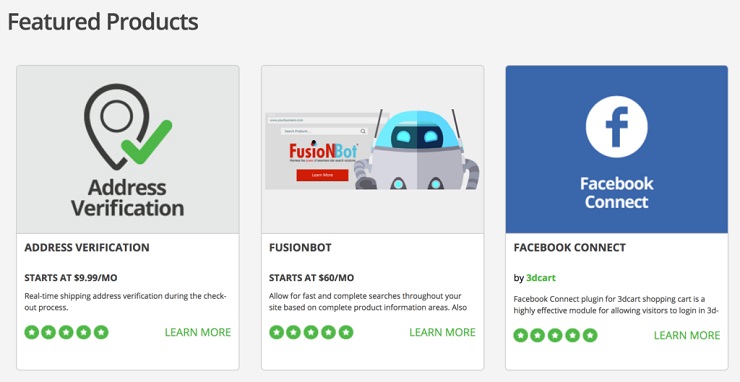
It should also be noted that, as of recently, 3dcart now allows unlimited bandwidth to all payment plans.
You can find out more about 3dcart's payment plans and pricing here.
Ease of Use of 3dcart
3dcart has a lot of features and you'll need to spend at least a few days using it before you can get the hang of it. In order to combat this and make sure you can get your online store up and running as fast as possible, every time you log in to 3dcart, you'll be presented with a setup wizard.
It'll run you through the eight essential steps of setting up your online store, so by the time you're done, you should have a functioning store relatively quickly. Once you get used to navigating 3dcart's dashboard and backend, you can disable the setup wizard.
I'm not sure how long it'll take you, but I found myself using it for the first half a dozen or so times, when I was doing my testing.
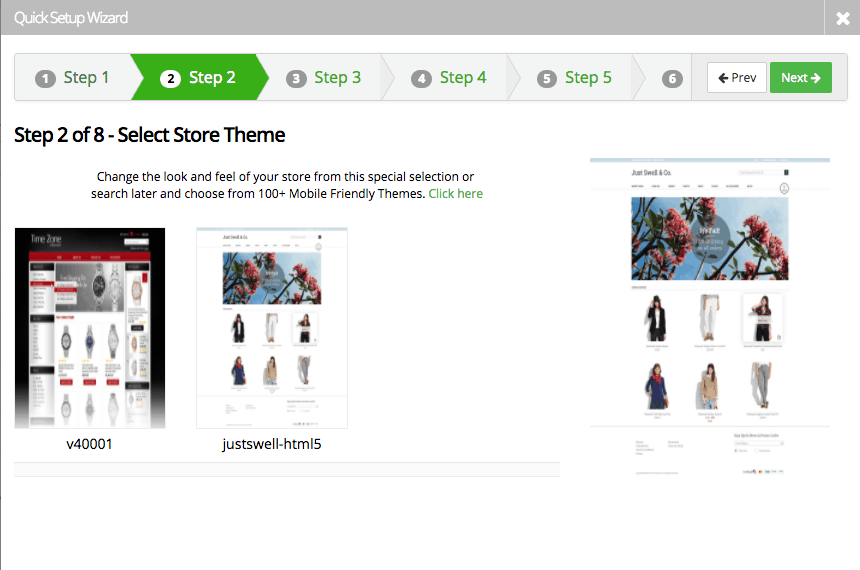
The dashboard itself has a very WordPress-like feel, with all the features listed on a sidebar. It can be intimidating for new users to navigate through all the features, but the learning curve shouldn't take more than a few days.
While it did only take me an hour to set up my initial store with the help of the setup wizard, it actually took me half a day to fully set up my store the way I wanted it. Even then it took me another few days to fully understand how everything worked.
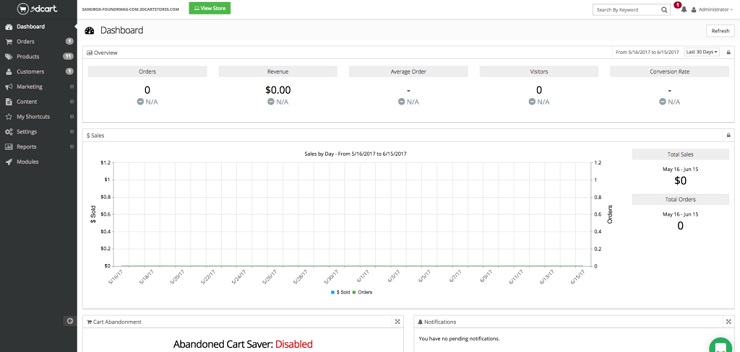
I also enjoyed how on the dashboard itself, there was a box dedicated solely to support, with a list of FAQs and options for phone or live support. It's a neat feature that isn't offered by anyone else as far as I can tell, and it does speak to 3dCart's commitment to onboarding their new users as quickly as possible.
The process of setting up your products can honestly be overwhelming, with a wide variety of options laid out for you. While it does certainly provide you the ability to tweak and edit every part of your product listing, from the different shipping options to SEO features. The layout does not provide the most user friendly experience.
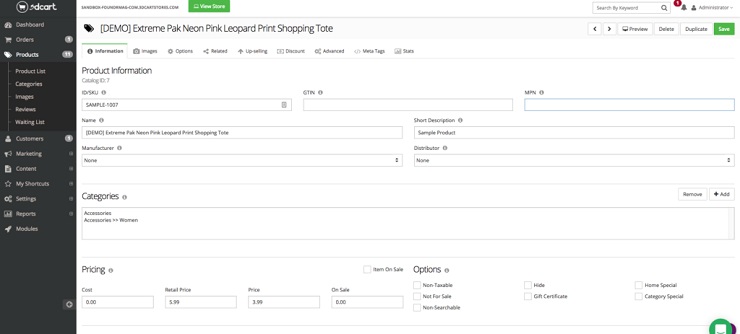
Once you do get used to navigating around 3dcart's backend though, you'll find that it's actually quite easy to use.
3dcart Design
3dcart boasts more than 100 free themes for you to choose from, but upon closer inspection, many of the free themes are quite plain looking. However, all of the free designs are mobile optimized and clearly designed with the intention of selling and providing a strong customer experience.
Something that is plainly evident from the templates available is that 3dcart is definitely more geared towards businesses that have a wide variety of products.

If you want to give your online store more of a distinct look and feel, you can always take a look at the premium themes offered by 3dcart. You can immediately tell that these themes are more polished, although the average premium theme is around $200.
Customizing the look of your store is very easy with 3dcart's visual editor, which means you can click and edit specific components of your store. This is great, especially if you don't have any design or coding experience.
I also really like how you can even add products and pages without having to leave 3dcart's visual composer. Anytime you want to add a new page it'll open up a new window that takes you to that customization page.
I found this to be very useful whenever I wanted to add a new page or change any specific components of my store without having to dive back into the dashboard.
3dcart Features
Where 3dcart's biggest strength lies is that it possesses an incredible number of features natively. While other ecommerce platforms might provide you with a more stripped down or basic set of features in order to encourage you to check out their app stores, 3dcart goes above and beyond the basics and accounts for virtually everything an entrepreneur needs to successfully run an ecommerce business. I'd even say that it contains more native features than Shopify.
Their app store serves as more of an "icing on the cake" for those who like having control over the extra details.
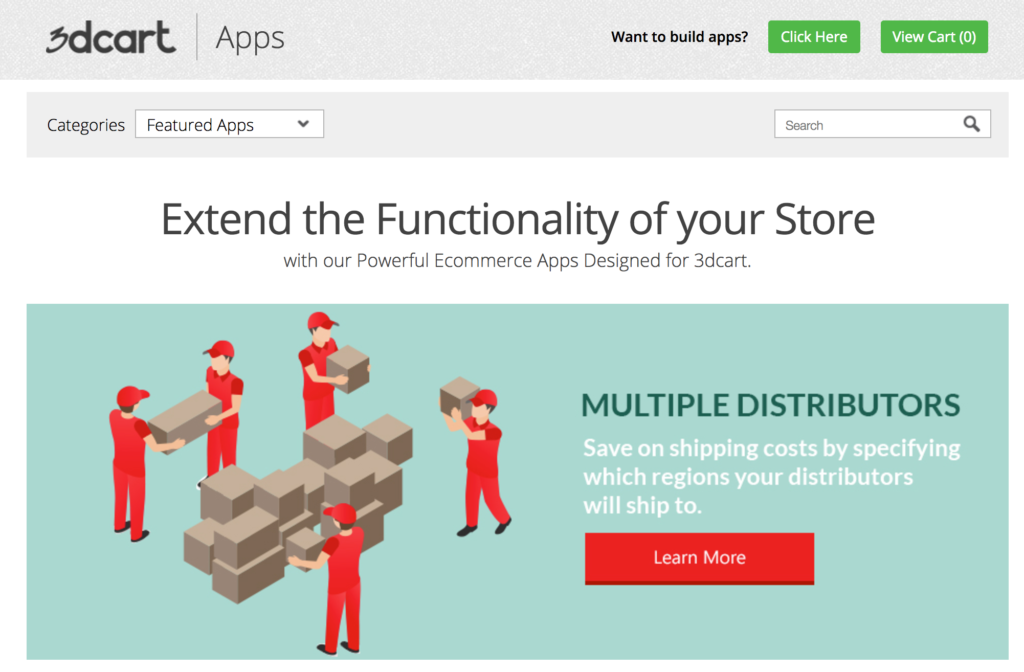
3dcart also hosts a number of impressive integrations with other platforms natively, so you can connect your store to places like Amazon, eBay, and even Facebook. This makes it so that if you happen to already be selling on those sites, you can easily transition to your new online store.
One of the best things about 3dcart is its impressive array of built-in marketing tools. Beyond just giving you the ability to create discount codes, 3dcart also comes with a native CRM tool so you can start building your email list and creating newsletters.

Along with features like auto-responders, which give you a huge ability to do cross-sells, upsets, and more, there are even tools for you to further customize your SEO, like editing meta tags or creating 301 page redirects.
Another neat feature of 3dcart is that it also gives you a marketing checklist to follow, with each item given a difficulty grade, along with a short tutorial on how to complete that task.
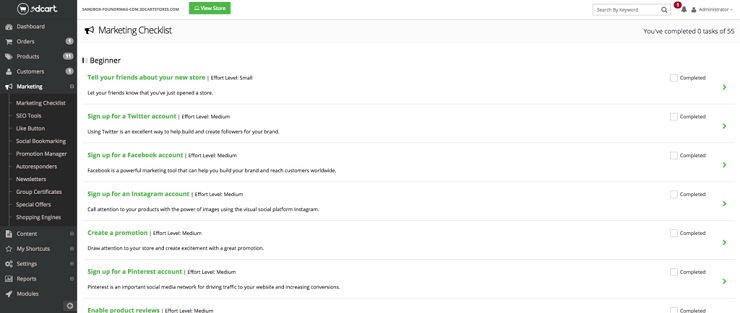
Managing your inventory is also very easy with 3dcart, with its built-in tax and shipping calculators so you don't have to rely on third-party tools. Also, I haven't found any other ecommerce platform offering more robust reporting data natively, with 3dcart being able to to track basic metrics like your customer and inventory levels, but also reports on your marketing efforts.
3dcart Support
Depending on who you talk to, 3dcart is either amazing at their customer support or the absolute worst. It's difficult to find a widely agreed upon consensus, although in my experience the customer support was average at best.
There's a number of ways you can get in contact with support, with your choices being calling them, submitting an email ticket, or using their live-chat feature.
The wait time was very average, sometimes waiting close to 48 hours to receive a response. When I did manage to get a hold of support, though, the staff were very knowledge and able to quickly resolve any issues I was facing.
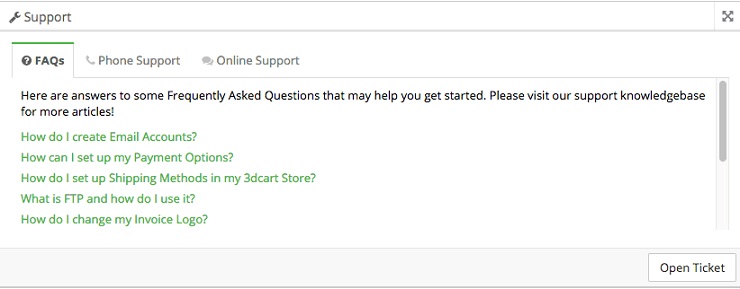
That being said, if you don't mind navigating through 3dcart's Knowledgebase, you should be able to resolve the majority of the problems you encounter by yourself.
3dcart offers some very detailed, up-to-date articles and videos on how to implement all their native features. As far as I can tell, 3dcart does a very good job of posting a new article every time they introduce a new feature or integration, giving detailed instructions on how to install it and answering the most common questions anyone might have about it.
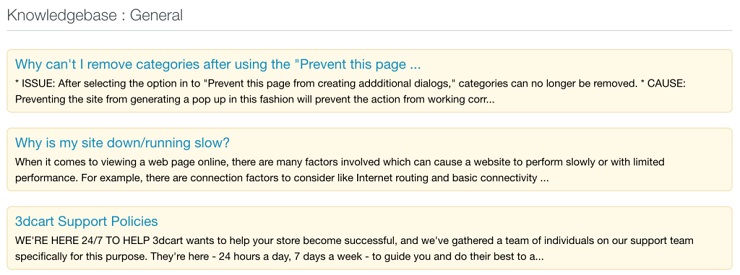
Finally there's also the 3dcart community forum, where you can post questions to the community. Although something that I immediately noticed was that the forum was mostly inactive, with most of the answers being from members advertising their own services.
Final Thoughts on 3dcart
3dcart is definitely one of the most powerful ecommerce platforms out there, and after speaking with one of their Partner Managers, I am very excited for their upcoming rollout of Version 8, which promises faster loading times, more control for designers, and enhanced design capabilities.
While 3dcart is designed for users of all levels, I would recommend it more for entrepreneurs who have at least some experience with ecommerce, or already have an established business. First-time entrepreneurs, or those with small product lines would be advised to stay away, as it's unlikely you'll be able to get the full value of what 3dcart has to offer.
Want to Learn How to Start & Grow a Profitable Online Store in 12 weeks? Sign Up for Our FREE Masterclass!
Learn How to Start a Profitable Store in 12 Weeks or Less. Join our FREE Ecommerce Masterclass!
The Best E-commerce Platform
And there we have it, the five most popular ecommerce platforms reviewed just for you.
What do you think of the ecommerce platforms we've reviewed? Which one do you like the most and why? Share with us your experience in the comments below!
Special thanks to:
Samantha Tam of Shopify
Warren Holmes of WooCommerce
Lulu Chang of SquareSpace
Richard Laing of Big Cartel
Leonardo Albarracin of 3dCart
And special thanks to Jake McKeown, Jimmy Gunnarson, Benny Hsu, Rakesh Tailor, Hayden Brass, Danny Buck, Alex Avery, Rich Stead, Vincent Lu, Aveline Clarke, and Heidi Rian for all your help!
Source: https://foundr.com/articles/building-a-business/ecommerce/ecommerce-platforms
0 Response to "Bigcartel Custom Domain Name Website Keeps Becoming an Active and Inactive Again"
Publicar un comentario